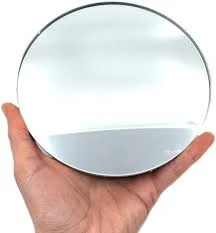

Tempered Glass Strength and Versatility
Tempered glass, also known as toughened glass, is a type of safety glass that has been treated with heat and chemicals to increase its strength compared to ordinary glass. This remarkable material undergoes a process known as tempering, which involves heating the glass to over 600 degrees Celsius and then rapidly cooling it. This method not only enhances its mechanical strength but also makes it shatter-resistant. When broken, tempered glass fractures into small, blunt pieces, significantly reducing the risk of injury, which is a critical advantage in many applications.
One of the most notable features of tempered glass is its impressive thermal resistance. It can withstand extreme temperature changes, making it suitable for environments subject to heat fluctuations, such as shower doors, oven doors, and glass partitions. This property also extends its use in architectural applications, such as facades and skylights, where large glass panels are exposed to varying weather conditions.
In addition to its strength, tempered glass is also valued for its aesthetic appeal. It provides a sleek and modern look that enhances both residential and commercial spaces. Architects and designers often opt for tempered glass in their projects due to its ability to blend functionality with style. It not only allows for natural light to enter buildings but also offers unobstructed views, creating a sense of openness.

Tempered glass is widely used in various industries, including automotive, construction, and consumer goods. In automobiles, it is used for side and rear windows, where safety is paramount. In buildings, it is common in glass railings, doors, and windows. Additionally, its use in furniture items, such as tables and shelves, offers a modern touch while prioritizing user safety.
Moreover, tempered glass can be treated further with coatings to enhance its features, such as anti-reflective surfaces or self-cleaning properties. This versatility makes it a popular choice among manufacturers and consumers alike.
In conclusion, tempered glass stands out as a crucial innovation in the materials sector, combining safety, strength, and aesthetics. Its applications are vast, and its benefits make it an essential choice in contemporary design and construction. As technology advances, the use of tempered glass will likely expand further, ensuring it remains at the forefront of architectural trends and safety standards.